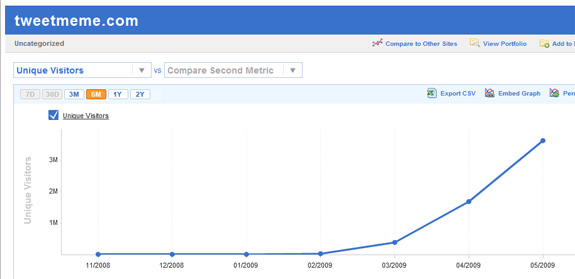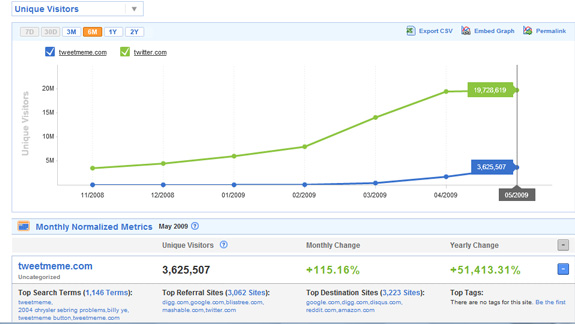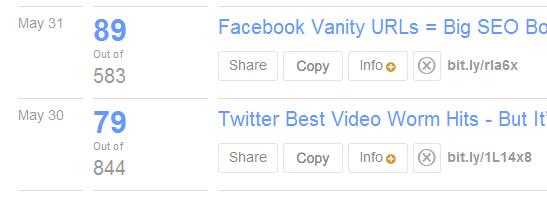Techmeme has become one my primary navigational sources for daily reading / news (others include email, Google RSS, Facebook, NYTimes, TechCrunch, etc). Twitter isn't yet there because it is simply too noisy to be efficient.
Techmeme solves a specific need: revealing quality, trending content across a variety of blogs and news sources. That same need exists on Twitter... and it can be argued it is both a harder AND more important task (after all, there is more noise and less context).
Perhaps that is why Tweetmeme is surging: it solves an important need for an immensely popular service. And as Twitter grows, Tweetmeme becomes even more important, sources more content and services a larger community. According to Compete, Tweetmeme now reaches 3.6m monthly uniques - a hefty number by any measurement. Equally impressive though is that Tweetmeme's reach represents nearly 20% of Twitter's monthly uniques (19.7m). Furthermore, as Twitter's growth flattened from April to May, Tweetmeme's more than doubled (1.6m to 3.6m):

Is this to say that Tweetmeme is the perfect service? No.
It is important however because it demonstrates: - a glaring need / opportunity within Twitter (either for third parties or Twitter itself) - the difficulty that finding poses (both algorithmic search and social search)... particularly in Twitter's dynamic world of 140 characters - a clear demand from users (after all, Tweetmeme's monthly uniques are 20% of Twitter's!) - a threat for sites like Digg and Stumbleupon... which Tweetmeme (or Twitter itself) can effectively compete with - an opportunity for Bit.ly - which is sitting on a goldmine of data surrounding referrals and links



